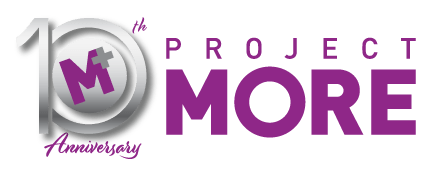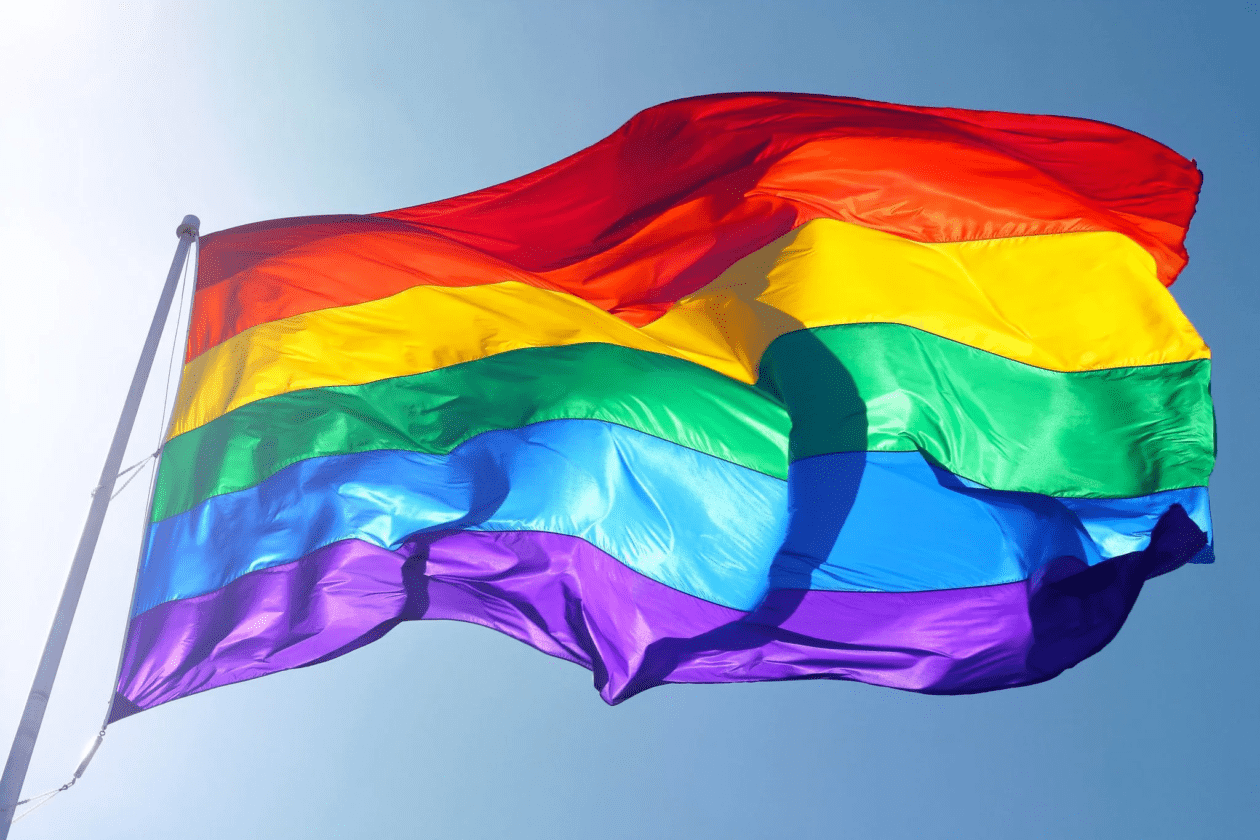
Part 1: a look at the history of the rainbow flag
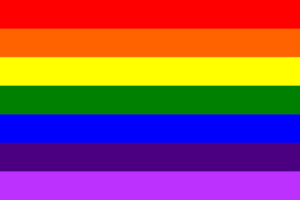
6-color rainbow pride flag. First mass-produced rainbow flag design.
Pride flags are powerful symbols of identity, sexuality, and allyship. If we ask you to name the most distinguishing one out of the dozens of common LGBTQ+ flags, then the rainbow pride flag undoubtedly comes to mind first.
You can find it practically anywhere— flying from public buildings such as university and state buildings to seeing it on everyday items such as bumper stickers and merchandise. And what are pride parades without a sea of rainbows?
Have you ever wondered why the rainbow flag is synonymous with the LGBTQ+ movement? What are its origins? If you have these thoughts then keep reading! Today, we will delve into the history of the iconic rainbow flag and its many variations following its original design.
The Original Rainbow Flag
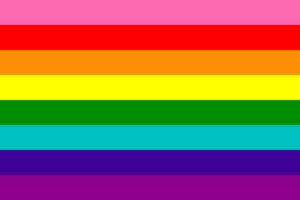
Original rainbow pride flag with 8 colors
The rainbow flag is the international symbol of the LGBTQ+ movement. It not only marks queer community and allyship within large U.S cities like San Francisco but also across the world from Taipei to Havana. Large, beautiful, colorful flags are flown in celebration of Pride Month around the world to mark acceptance, indicate safe spaces, and pay tribute to LGBTQ+ civil rights moments in history.
Originally, the flag donned 8 solid-colored stripes with pink representing sex, red representing life, orange for healing, yellow for sunlight, green for nature, turquoise for art, indigo for harmony, and lastly violet for spirit. The flag was commissioned by one of the first openly gay men elected to office, Harvey Milk, and created by artist and designer Gilbert Baker in 1978.
As San Francisco county supervisor, Milk challenged Baker to come up with a new symbol to represent the gay community for the San Francisco Pride Parade of the same year.
Each flag was originally hand-sewn by Baker and a team of 30 volunteers. Later when the flag became mass-produced, two of the original eight colors were dropped and indigo was replaced with blue seen in the most prominent 6-color version today.
Rationale Behind its Designs
Why a rainbow flag? You may be asking. And why did Baker choose a flag to be a symbol of the gay community?
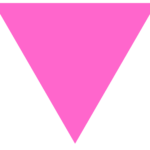
Pink Triangle
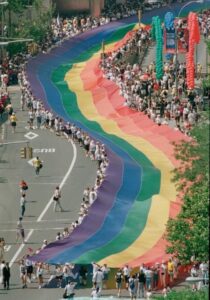
Mile-long rainbow flag. Photo credit: Eric Miller
In the early days of the Gay Rights movement, the upside-down pink triangle once used in Nazi Germany to persecute queer people was reclaimed by the LGBTQ+ community. It served as the predecessor to the pride flag as a symbol of the gay community. However, Milk and Baker both wanted a new, more positive symbol of the gay community. They wanted something that represents hope for the younger generation.
In one interview, Baker stated that he took inspiration from the U.S. flag. The gay community needed something visible and uniting to stand behind. And nothing would work better than a rainbow, “a natural flag in the sky,” explained Baker. Rather than reclaiming a symbol of hate, Baker chose to create a new symbol of beauty, hope, uniqueness, and diversity for queer people.
Tragedy struck Milk in November 1978. The gay pioneer and icon was assassinated. Following his death, the queer community and allies alike flocked to purchase their own rainbow flag to honor Milk. Baker, wanting to honor Milk’s legacy along with the 25th anniversary of the Stonewall Riots, created a mile-long version of this flag for New York City Pride in 1994. The rest is history; this is the flag proudly flown every June during Pride Month.
Variations of the Flag
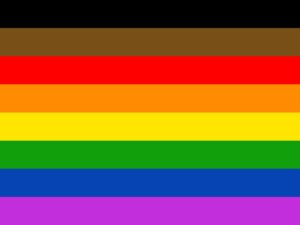
Philadelphia Pride Flag
There are other versions of the rainbow pride flag that we commonly see today. For example, the Philadelphia and Progress flag has recently gained popularity following the Black Lives Matter movement. The Philadelphia Flag, as shown above, adds a black and brown stripe to the top of the rainbow flag. It was initially conceived and pushed by the city of Philadelphia to bring light to the racism occurring within its Gayborhood.
Its purpose was to make sure sure that people of color were included in the LGBTQ+ conversation, to remind us of their contribution to the LGBTQ+ civil rights movement, and to reaffirm that queer people of color belong within the queer community.
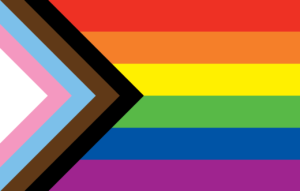
Progress Pride Flag
The Progress flag incorporates the colors used in the Philadelphia flag and the Transgender flag. Those colors are meant to highlight people of color, transgender people and their inclusion in the larger LGBTQ+ community and its history, and those living or who have lost their lives to AIDS. The arrow (chevron) shape formed at the left edge of the flag illustrates that there is more progress to be made within the LGBTQ+ community.
Significance of the Rainbow Flag
Beginning as a much-needed symbol for the early gay community, the iconic rainbow flag evolved through time to represent the needs of the diverse queer identities and marginalized groups that make up the LGBTQ+ community today.
Needless to say, our beloved symbol does a fantastic job of uniting and bringing people together. Seeing a rainbow flag in our community, whether it’s draped outside the neighbor’s house or stuck on the bumper of a coworker’s car, evokes a sense of solidarity and allyship because it means that we are not alone. Much like the rainbow, the flag celebrates the diversity and beauty of human sexuality, as well as the beauty of our brothers and sisters that identify within the LGBTQ+ spectrum.
That is all for this month’s deep dive into the history of popular icons and imagery prevalent in the queer space. Stay tuned for next month’s installment, where we would be exploring other historical or culturally prominent symbols in our community!
